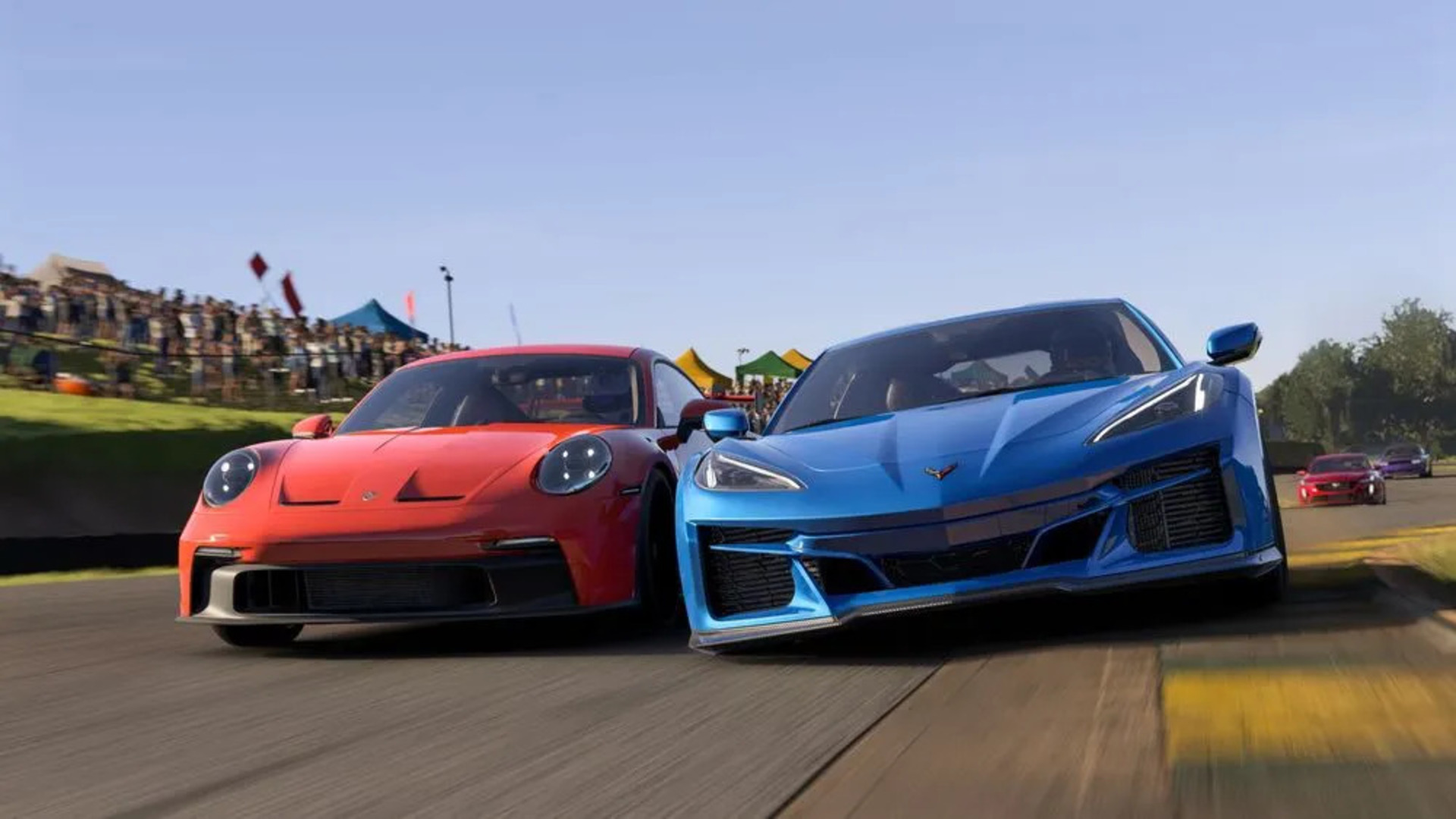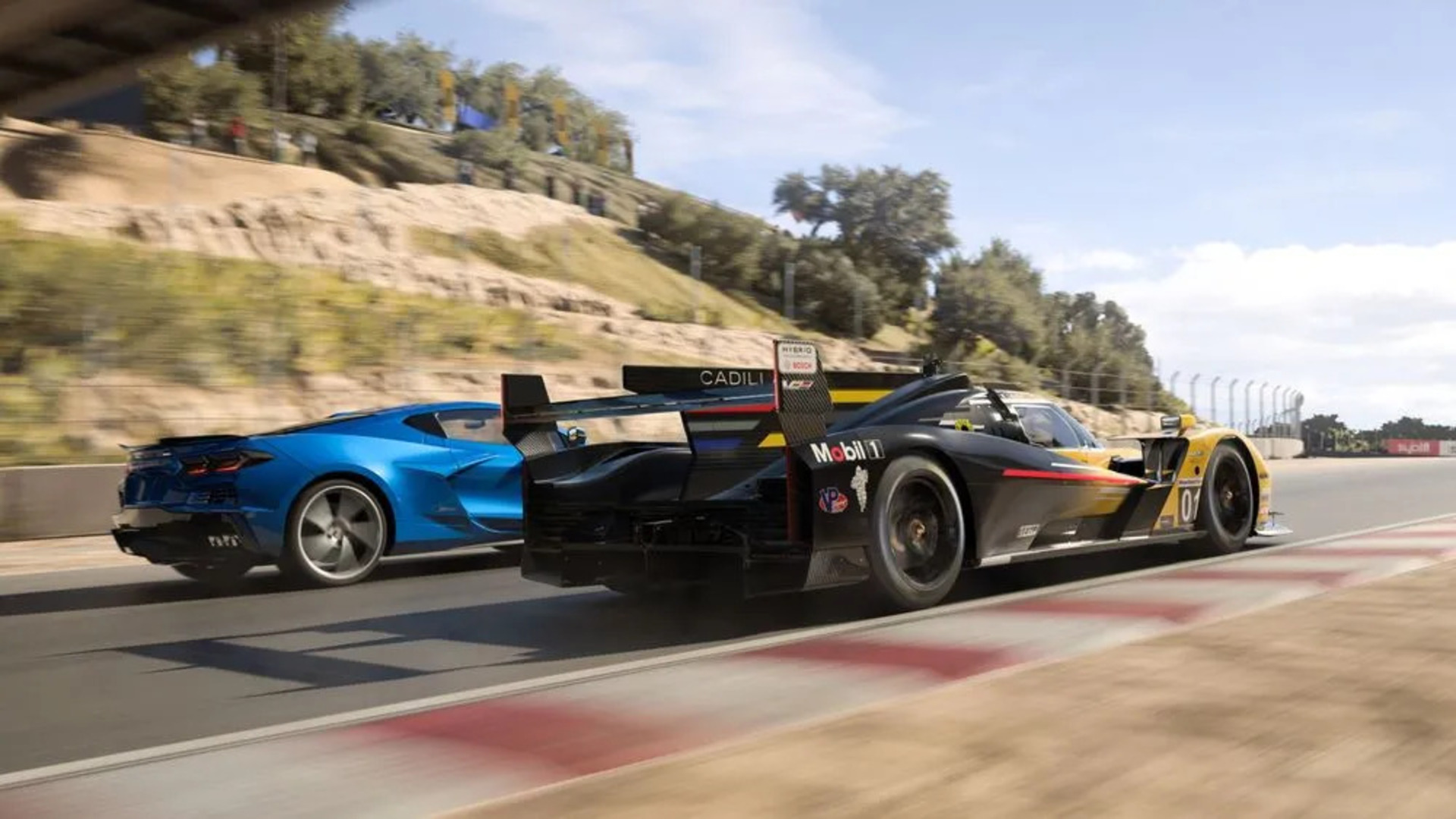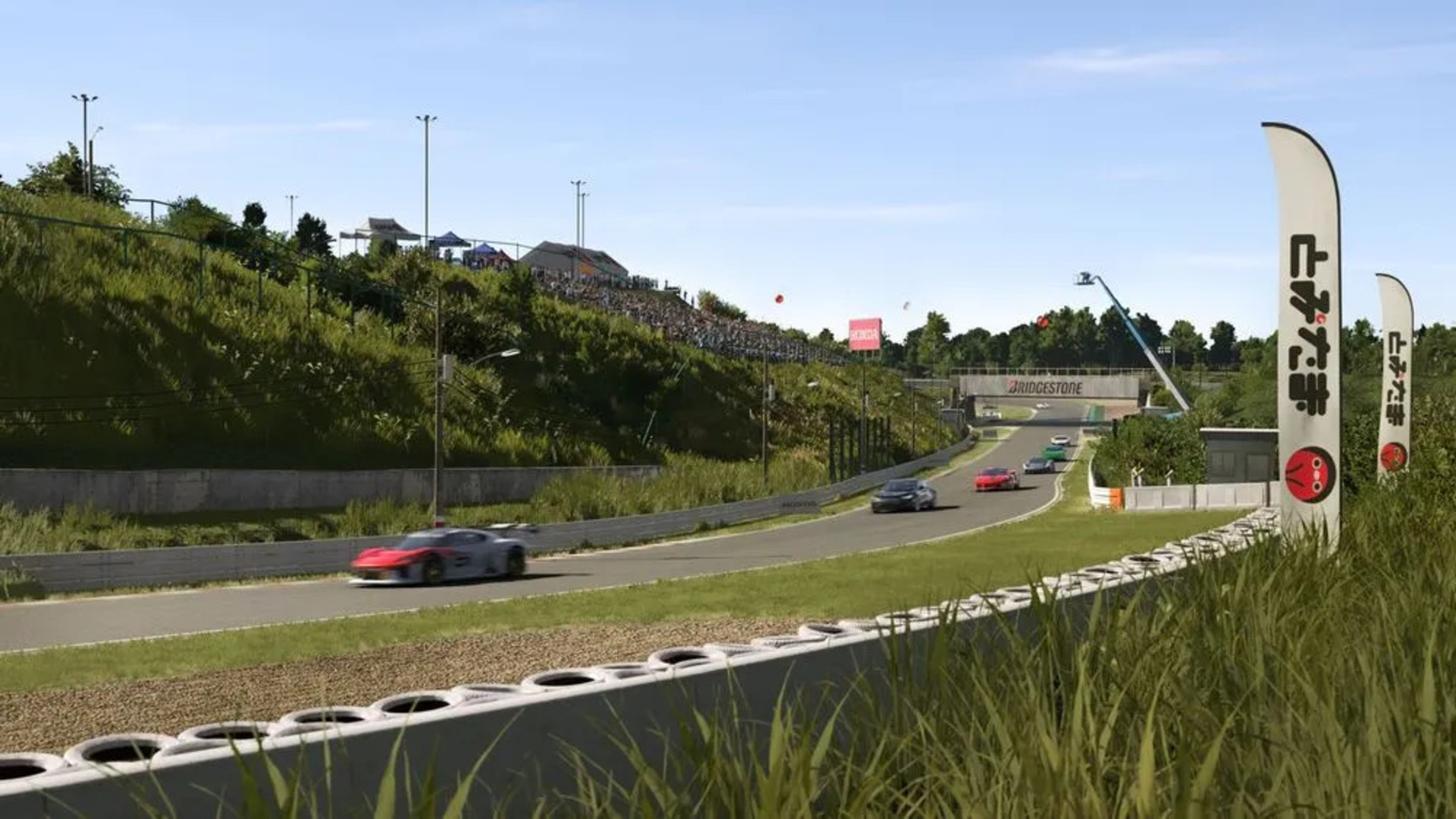This AI improvement changes everything in Forza Motorsport
The incredible ripple effect of smarter drivers

Right now as we await the game’s imminent launch, the AI opponents in Forza Motorsport have already got years of skin in the game. Unlike Motorsport 7’s AI, which had a choice of just three racing lines around each circuit which were hand-drawn by a developer, they approach the track dynamically now. What’s the weather like? How much grip’s left on the tires? How well does this specific vehicle respond to late braking, or carrying corner speed into the apex?
It’s smarter, then. Like several other racing games, including Milestone S.r.l’s brilliant and unsung MotoGP series, Forza Motorsport uses learning AI to achieve much better computer opponents, and the ripples of that improvement spread much wider than you’d think.
In the first place, it’s worth noting that opponents in both Forza Motorsport 7 and Horizon 5 were particularly dim. Not only could they only drive along those three lines around a track, but they were also incapable of modulated or gradual braking or accelerating. It was 100% or nothing. You’d see them blipping the brakes, rear lights going on and off like a rave, to simulate progressive braking. These drivers didn’t race like you. They simply couldn’t.
Offline races weren’t a very good training tool for online competition
And that meant offline races weren’t a very good training tool for online competition. If you followed the AI’s line, there was no guarantee you’d actually find the quickest way around a corner, and since they were driving as though they were using the face buttons on a PS1 controller for throttle and brake, you couldn’t copy their braking points with any certainty that you’d found the optimal marker.
The AI drivers were there to be beaten, to make you feel like the protagonist. And that was as deep as it went.
Skill issue

This limited skill level bled through into how car performance ratings worked, too, and that in turn dictated the whole online meta. When someone uploaded a new tune for a vehicle in FM7 or the Horizon games, the AI ‘drove’ that tuned vehicle in a simulation to work out its new performance rating. Except, as we’ve already established, the AI had a fundamentally weird and inhuman way of driving cars, so when a human got their hands on the same tuned car they might find that their ability to brake and accelerate progressively and experiment with lines got a lot more out of the car. In other words, some tunings were much, much faster than their performance ratings indicated.
How confident are you feeling about your lines at Spa now?
And it was finding these cars and tunings that made such a big part of the Forza online meta. The unassuming Eagle Speedster in Forza Horizon 4 was an incredible platform for A to S1 tunings, and one suspects that’s partly because the AI just couldn’t use its full potential when it test-drove it to establish performance numbers.
Sign up for breaking news, reviews, opinion, top tech deals, and more.
Forza Motorsport 8’s drivers do about 26,000 laps in each circuit, in a variety of cars, as part of their reinforced learning AI training. That’s about one calendar month, racing the same track, 24 hours a day. How confident are you feeling about your lines at Spa now?
High performance

The result of that intensive training means FM8’s Drivatars can pick from numerous lines now - 19 different lines per track in total - and they can decide which to take based on the car and the conditions.
That sounds like something cool to put on the store page, but it’s a meaningful change. Because now when you watch an AI opponent, you should be able to actually learn something. Not just because they’re driving the car like you are, with degrees of throttle and braking, but because they genuinely might have figured out something about this corner that you haven’t.
It isn’t just that a designer told them 19 new routes, they’ve discovered the routes for themselves, without human interference. Once the goosebumps die down on your flesh after thinking about that, really thinking about it, they should be extremely useful training devices.
They’ve discovered the routes for themselves, without human interference
And what could it mean for car performance ratings? If the AI drivers who run simulated laps in tuned cars are now smarter and drive more like humans using an analytical approach to the challenge of getting around a circuit as quickly as possible, will we end up with more accurate, less cheesy perf ratings for each car?
Personally, this single piece of information about FM8 has made me more excited than any other. It was always going to look great. Handling has never been a problem in the series. The news of its revised and deeper damage model sounds encouraging but it’s not the sort of feature that stops you from being able to get to sleep the night before launch day. And let’s not even go into the developers using the term ‘Car-PG’ several times to describe its new upgrade structure.
But one under-the-radar blog post from the developer about AI has fostered real belief in me as a sim racing fan that FM8 can, and likely will, feel like a step forward. We’d all better get practicing our lines because the new Drivatars are already one month of solid training ahead of us.
Looking for more high-speed thrills? Check out our broad list of the best racing games as well as our more specific run-down of the best Xbox Series X racing games.

Ad creative by day, wandering mystic of 90s gaming folklore by moonlight, freelance contributor Phil started writing about games during the late Byzantine Empire era. Since then he’s picked up bylines for The Guardian, Rolling Stone, IGN, USA Today, Eurogamer, PC Gamer, VG247, Edge, Gazetta Dello Sport, Computerbild, Rock Paper Shotgun, Official PlayStation Magazine, Official Xbox Magaine, CVG, Games Master, TrustedReviews, Green Man Gaming, and a few others but he doesn’t want to bore you with too many. Won a GMA once.